The Goethe-Institut's
Reading Room
Pyongyang:
Between
Object and Shadow
- An exhibition and event programme (19th – 21st April, 2013)

|
Artists: Sara van der Heide, Sascha Pohle
Contributions by: Clarence Barlow, Charles Esche, Barbara Honrath, Lars Laumann, Jooyoung Lee, Daniel Norregaard & Moonsick Gang, Jasna Veličković Curator: Christina Li
Herengracht 470, Amsterdam
The Netherlands
Doors open 19.00 on Friday 19th April
Official opening 21.00
Visiting hours:
Friday 19.00–00.00
Saturday 16.00–00.00
Sunday 14.00–22.00
Introduction
There are those who want a text (an art, a painting) without a shadow, without the ‘dominant ideology’; but this is to want a text without fecundity, without productivity, a sterile text. The text needs its shadow: this shadow is a bit of ideology, a bit of representation, a bit of subject: ghosts, pockets, traces, necessary clouds: subversion must produce its own chiaroscuro.
-
— Roland Barthes, The Pleasure of the Text
The Goethe-Institut's Reading Room Pyongyang in Amsterdam
| "Wir wagen ein Experiment, denn wir wollen als Erste dabei sein, wenn Ihr Land beginnt, sich zu öffnen." (We are undertaking a risky experiment, because we want to be the first present when your country opens up.). | |
|
With these words Jutta Limbach, the former president of the Goethe-Institut, opened the Office for German Academic and Technical Publishing at the Goethe-Institut's Information Centre Pyongyang in secluded communist North Korea on 2 June 2004. Also known as the Goethe-Institut Reading Room Pyongyang, this extraordinary initiative of the Institute was perhaps bound to fail, and eventually, the Reading Room would exist no more than five years. The room’s contents were negotiated over a two-year period, with the North Korean government pressing for academic literature on science, technology and medicine, while the Goethe-Institut maintained that 50% of the books should pertain to German culture, language, literature and music. Importantly, free access was to be granted to local audiences and no censorship imposed. Later however, repeated reports emerged that North Korean authorities had tried to deter people from entering the Reading Room, and that they also attempted to censor its contents. As a result, in 2009, the Reading Room was closed.
|
Over the course of one weekend the Goethe-Institut Amsterdam, will become the now closed Goethe-Institut Reading Room Pyongyang. This temporal intervention is an imaginary transformation of the current geography of the building, and raises a series of unasked questions that became apparent during the research process into the political and historical circumstances surrounding the opening and closing of the Pyongyang Reading Room. Instead of finding simple answers however, the exploration revealed more complexities: as a gesture, what does the Reading Room say about the rather optimistic diplomatic zeitgeist in 2004? In what way did the friendship between the former DDR and North Korea, both implicitly and explicitly pave the way for the negotiations in making this possible? What did it mean for a nation like Germany, growing self-confidence only 16 years after reunification, to promote democratic values through the opening of a reading room in a communist totalitarian regime like North Korea? How does Germany redefine itself throughout the worldwide activities of the Goethe-Institut considering its own past, or maybe in spite of it? And what chameleon-like roles do the arts have to play in the kaleidoscopic field of political and diplomatic interests?
–Sara van der Heide
|
Programme
|
FRIDAY, 19th April
21:00Welcoming remarks by Barbara Honrath 21:15Reading of excerpts from Fantasy Residency in North Korea: Please don’t take off the lids. The pots are empty – a book by Jooyoung Lee 22:15 Screening of Berlinmuren (2008), Lars Laumann Reading of excerpts from Fantasy Residency in North Korea: Please don't take off the lids. The pots are empty – a book by Jooyoung Lee While conducting residencies worldwide, Lee began to wonder, “What would the experience of living in North Korea as a resident artist be like?” With the impossibility of physically traveling to that region, Lee devised a Fantasy Residency in North Korea based on her experience of living in Berlin. The commonalities between by Korea and Germany not only rest on their divided histories; as Lee uncovered during a project she developed in her two-month residency in Berlin in 2010. Her findings – which included part of a North Korean embassy transformed into a hostel, as well as dialogues with a North Korean and an East German who travelled to North Korea – culminated in a book exploring the objects and stories of North Korea she discovered in Berlin. For her reading, performers will share selected fragments in Korean, English and German, inviting the audience to enter these stories, and memories of a different place and time, while embracing the complexity of these changing and momentarily combined histories. Performers: Seungyong, Moon, Gwen Parry, and Hartmut Wilkening Jooyoung Lee (Daegu, KR, 1971) is an artist living and working in Seoul, South Korea. Berlinmuren (2008) by Lars Laumann Video, 23 mins In the video Berlinmuren, there are three protagonists: two women and the Berlin Wall. One of the women, who claims to have married the Berlin Wall, says: “The wall didn’t ask to be built, like human beings don’t ask to be born.” When one approaches the Berlin Wall as an object with a soul, links to the idea that objects have a life cycle: birth, growth, full maturity and death. In the case of Germany, at the end of the Cold War, the Wall was demolished and “died” in 1989. This symbol of Germany’s separated history is now only accessible through relics and documentation, while in the divided Koreas; the 250km-long and approximately 4km-wide Demilitarised Zone (DMZ) is still very much alive. Lars Laumann (Oslo, NOR, 1977) is an artist currently living and working in Brussels. |
SATURDAY, 20th April
20:00Talk between Barbara Honrath and Charles Esche
21:15Evening film screenings:
Mensch und Kunstfigur (1969)
Doppelkonzert (1963)
Begegnungen (1969/70)
Das Deutsche Dilemma (1982)
Talk between Barbara Honrath and Charles Esche
Barbara Honrath is the director of the Goethe-Institut Amsterdam. Charles Esche is the director of the Van Abbemuseum and has worked extensively in post-communist contexts. The conversation will focus on the significance of international cultural exchange in totalitarian regimes, as well as the potentials and the implications of using art and culture as a catalyst in opening a space for dialogue. In 2011 the Van Abbemuseum brought Picasso’s Buste de Femme (1943) to Ramallah, Palestine. The removal of this masterpiece from its usual context in a European museum, becomes a point of comparison with the temporary imaginary transformation of the Goethe-Institut Amsterdam into the Pyongyang Reading Room.
Evening film screenings
Over two evenings, Sascha Pohle will present a programme of selected films from the Goethe-Institut Amsterdam’s 16mm film stock. While in Pohle’s exhibited work, Crippled Symmetry, a distant and formalistic approach to the film material is apparent, the screening programme will bring the films themselves, last seen decades ago, back to centre stage. The constellation of footage shown highlights notions of visual translation while also connecting to and opening up the myriad issues being addressed in the larger framework of The Goethe-Institut’s Reading Room Pyongyang: Between Object and Shadow.
The first evening will feature a group of films addressing issues in the world at large. Begegnungen (“Encounters”) and Doppelkonzert (“Double Concert”) depict the Goethe-Institut’s language and cultural activities in Nigeria, Egypt and India in the 1970s. A current affairs programme, Das Deutsche Dilemma (“The German Dilemma”), also gives an impression of the cultural debates surrounding the divided Germany. Set alongside this is Margarete Hasting’s film about Oskar Schlemmer’s Triadic Ballet, in which the framing of figures in space could act as a visual metaphor for the making of this programme segment.
The films will be screened in their original language without English subtitles.
|
SUNDAY, 21st April
18:30Evening film screenings:
Reflektorische Farblichtspiele (1967)
Dr. Murkes gesammeltes Schweigen (1964)
Antithese (1965)
Boot aus Stein (1981)
21:15
Shadow Study #4 by Jasna Veličković
21:25
Deutscher Sang by Clarence Barlow
21:55
Good Bach by Jasna Veličković
Evening film screenings
The final night of the weekend brings into focus form and material: from Kurt Schwerdtfeger’s Reflektorische Farblichtspiele (“Reflecting Colour-Light-Play”), to a TV film of Heinrich Böll’s Dr. Murkes gesammeltes Schweigen (“Murke’s Collected Silences”), to Mauricio Kagel’s experimental musical film piece Antithese, and Boot aus Stein (“Boat of stone”) which chronicles Hannsjorg Voth’s impressive project in which he built a stone boat whilst inside a pyramid floating on the IJselmeer.
The films will be screened in their original language without English subtitles.
Shadow Study #4 (2009) by Jasna Veličković
For piano four coils/hands, 7 mins
Shadow Study #4 builds on Frederic Chopin's Prelude Op.28 No.4 E Minor, which is based on a simple melody combined with complex harmonic language. Veličković shifts the listeners’ attention from the melody and accompaniment of Chopin’s Prelude to the resonant sounds of the instrument being played. In her piece, choosing a maximum of four notes out of up to 15 notes in each bar, two performers excite the piano strings by placing coils which transmit the recording of the Chopin's Prelude over them. In this way, the harmonic development of the prelude is extended to the acoustic phenomena of the vibrated strings, opening up almost infinite possibilities as to how the Shadow Study #4 could sound.
Seen as a "print" of Chopin's Prelude the piano acts as a tool, assuming the function of a loudspeaker, or on a meta-level, becoming a “post piano”. In the end, the sound heard is a shadow of an existing music piece. The Prelude itself is used as a ready-made, yet through the process of performance, one sound reality produces another one anew.
Performers: Jasna Veličković and Nora Mulder
Jasna Veličković (Belgrade, SRB, 1974) is a composer and performer based in Amsterdam.
Deutscher Sang by Clarence Barlow
(Radio play, 30 min)
Deutscher Sang was commissioned by the Radio Drama Department of Hessian Broadcasting, Frankfurt-on-Main, Germany. The play’s theme of nationalism has been reinterpreted with some irony by Barlow who recorded all entries beginning with “deutsch” in a German telephone directory being read by an Englishman.
A second layer of the piece comprises Haydn’s Emperor melody, used as an Austrian anthem before it was appropriated by the German authorities in 1922 as their national anthem. The piece was adopted by the Nazi regime and also by today’s Federal Republic. In Barlow’s work, Haydn’s melody was performed on a mediaeval fiddle and notated as harmonics, making it sound two octaves higher than normal. The recording was then played at one-quarter the speed, which lowered the pitch and lengthened the melody.
The two recordings were then treated as a twelve-part canon with a gradually decreasing time-delay, while the volume of the mid-range frequencies in the spoken track were progressively reduced. Near the end, the piece culminates in a final chorale – the text from the German National Anthem as sung until the fall of the Nazis: “Deutsche Frauen, deutsche Treue / Deutscher Wein und deutscher Sang” meaning “German women, German loyalty / German wine and German song”. The text is phonetically sung backwards to the Haydn melody, which is also harmonized backwards in the 14th century manner. Barlow then reversed the tape, resulting in an uncomfortable forward-moving text atop a backwards melody, forwards harmony.
Voice: Tom Mohan
Violin: Margriet Tindemans
Choir: Ensemble Sequentia
Clarence Barlow (Calcutta, IN, 1945) is a composer and professor in composition at the University of California in Santa Barbara.
Good Bach (2001/2004) by Jasna Veličković
For piano and CD, 4 mins
Piece inspired by Ludwig Wittgenstein's Tractatus Logico-Philosophicus.
In this work, a recording of Glenn Gould's performance of Bach's C Major Prelude and Fugue is played while the pianist, Veličković herself, interacting with the recording, performs her own composition. For this piece, a statistical method was applied to exactly the same notes as Bach’s works, ordering them from the lowest to the highest pitch and thus creating a different logic which deviates from traditional musical styles. Here, Veličković problematises the technique of playing as well as the status and function of the piano as an instrument. In this piece particularly the usual "composer-score-performer-sound” chain is altered, as Bach's notes become a set of traces – a pattern in a dissembled media and conceptual phenomenology of the work. The listener is therefore confronted with both compositions simultaneously, and in their overlapping, a third one emerges.
Good Bach was previously performed at Goethe-Institut Amsterdam by pianist Dante Boon, on 3 February 2008 in the concert series, Piano Lab.Asmterdam.
Piano: Jasna Veličković
|
Berlinmuren, Lars Laumann, 2008
© The Artist, Courtesy Maureen Paley, London
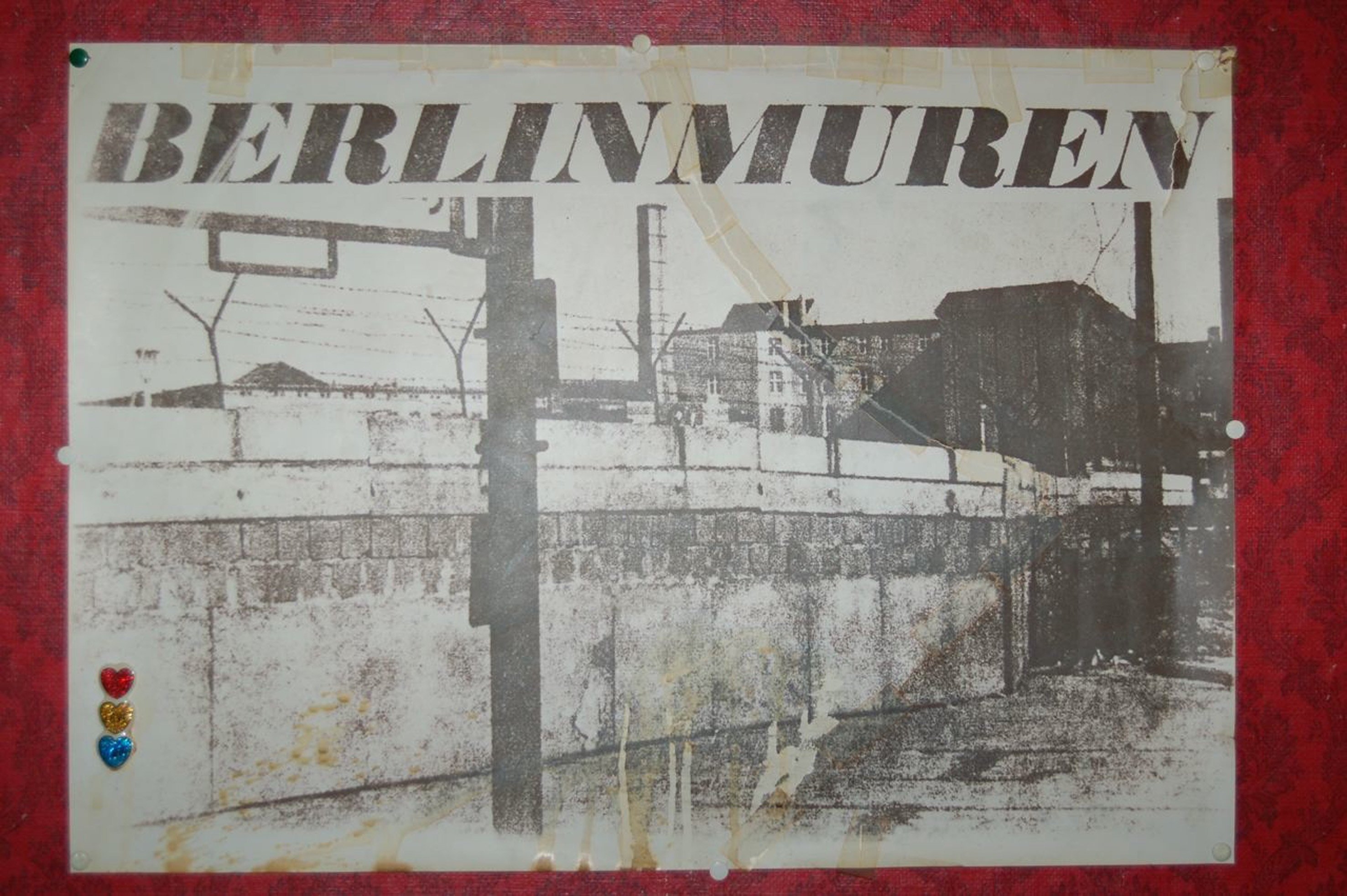
|
Shadow Study #4, Jasna Veličković, 2009

|
Deutscher Sang, Clarence Barlow, 1982
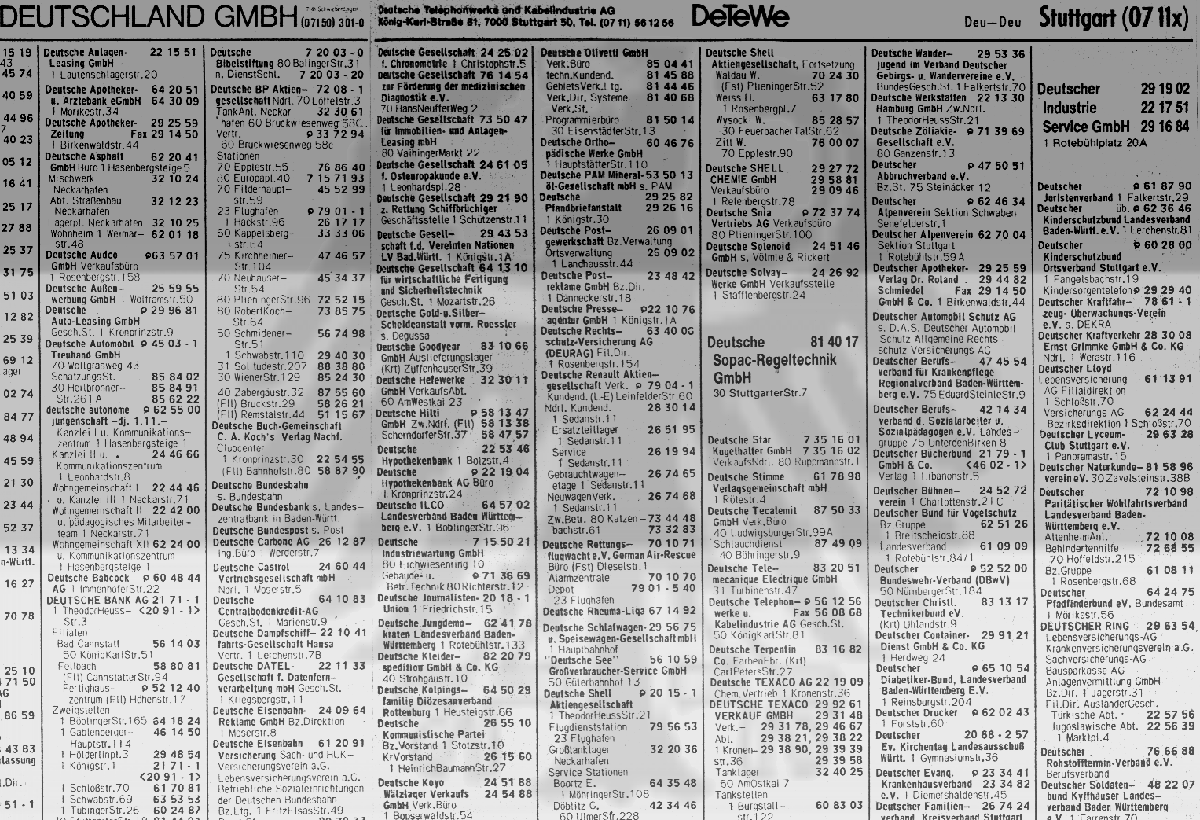
|
A conversation with Kyung-chul Hyon, from the book "Fantasy Residency in North Korea:Please don't take off the lids. The pots are empty", Jooyoung Lee, 2010
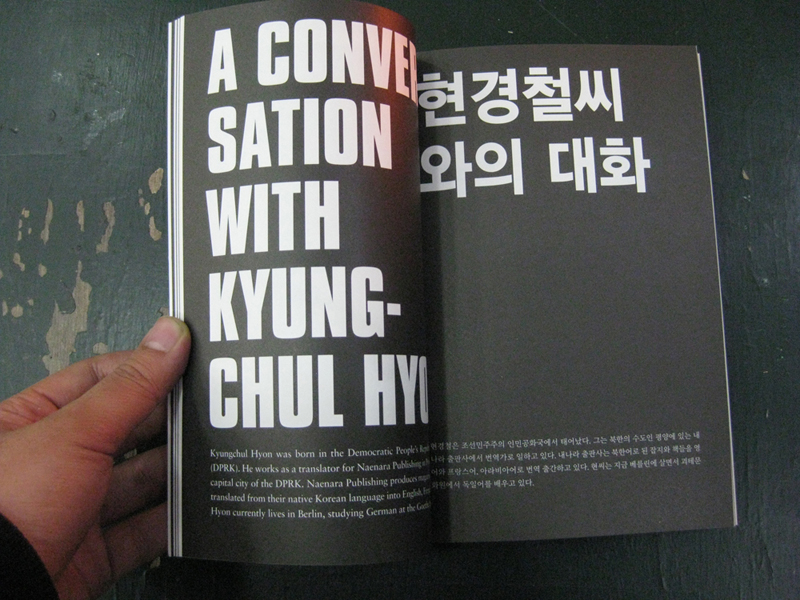
|
Exhibition
| Zur Farbenlehre, Colour and Background (After Goethe), Sara van der Heide, 2011 | Crippled Symmetry, Sascha Pohle, 2013 | |
|
|
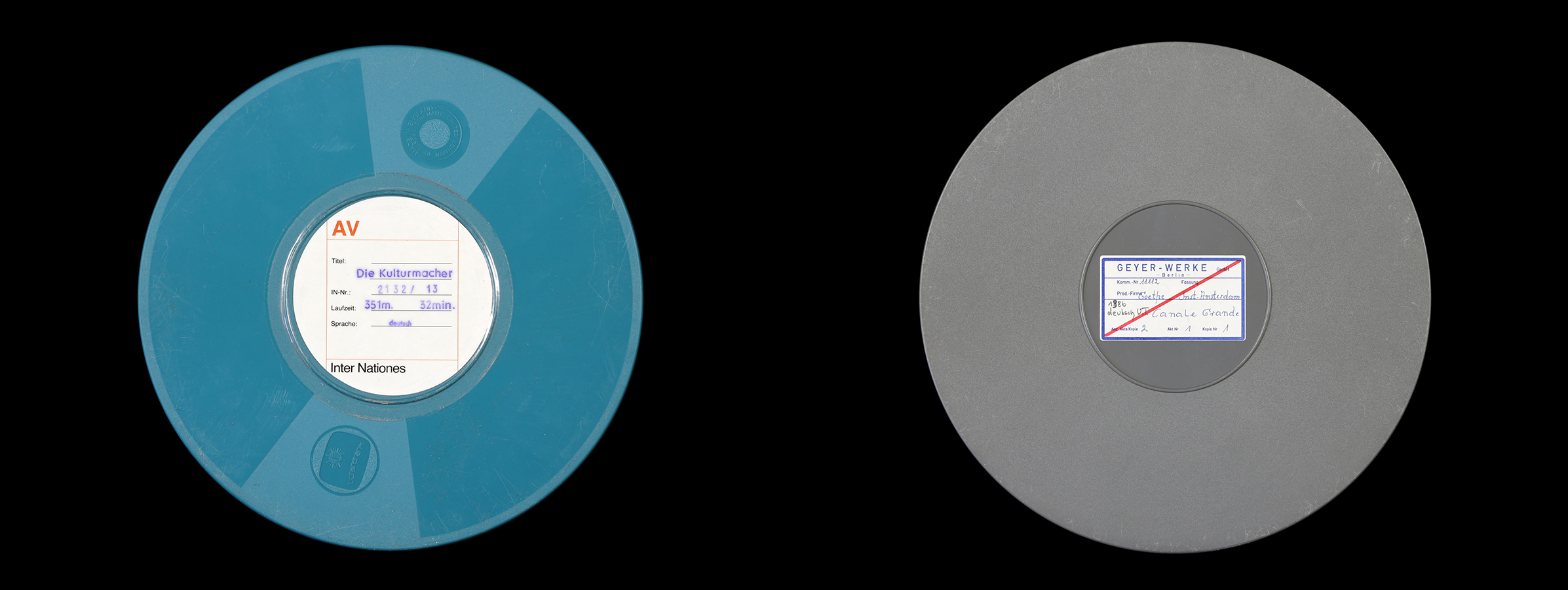
| |
Colophon
|
Design: Daniel Nørregaard & Moonsick Gang
Typeface: Gothic
Photography: Courtesy of the artists
Texts: Christina Li, and the artists
English Copyeditor: Clare Butcher
Translations: Jennifer Steetskamp (German); Yunjoo Kwak (Korean)
The Goethe-Institut's Reading Room Pyongyang: Between Object and Shadow is part of the second edition of Interventions initiated by the Goethe-Institut Amsterdam.
This project is supported by the AFK (Amsterdam Fund for the Arts).
 This project was also made possible with the generous support of:
Barbara Honrath, Melanie Bühler, Barbara Mulzer, Wolfgang Schreiber, the staff of the Goethe-Insitut Amsterdam and the Goethe-Institut Headquarters Munich, Germany and Uwe Schmelter.
This project was also made possible with the generous support of:
Barbara Honrath, Melanie Bühler, Barbara Mulzer, Wolfgang Schreiber, the staff of the Goethe-Insitut Amsterdam and the Goethe-Institut Headquarters Munich, Germany and Uwe Schmelter.
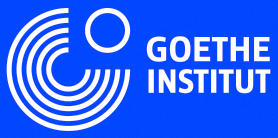 The German brand Warsteiner, which has a strong connection with the international art world, will support the exhibition in the Goethe-Institut.
The German brand Warsteiner, which has a strong connection with the international art world, will support the exhibition in the Goethe-Institut.
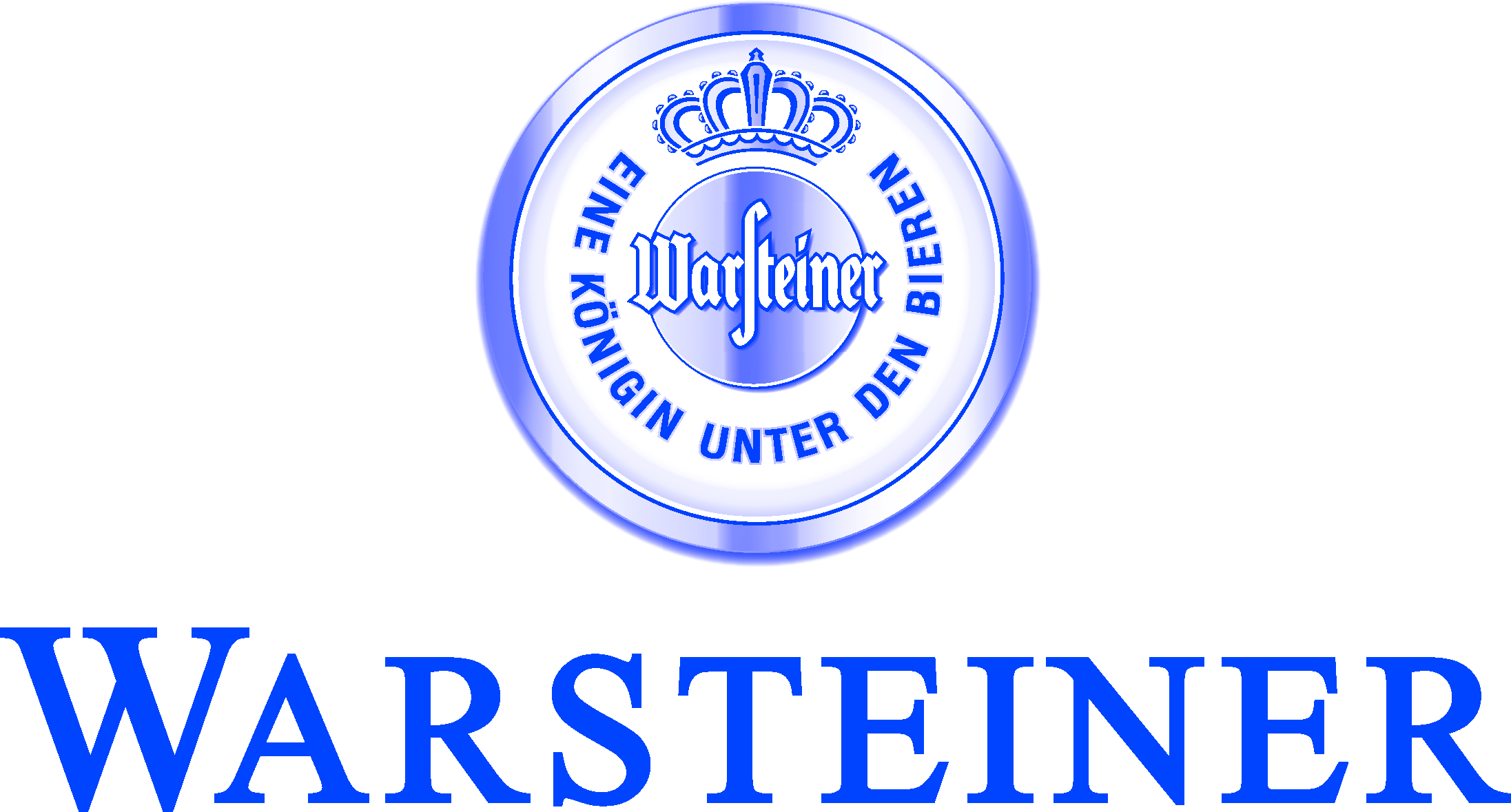
|